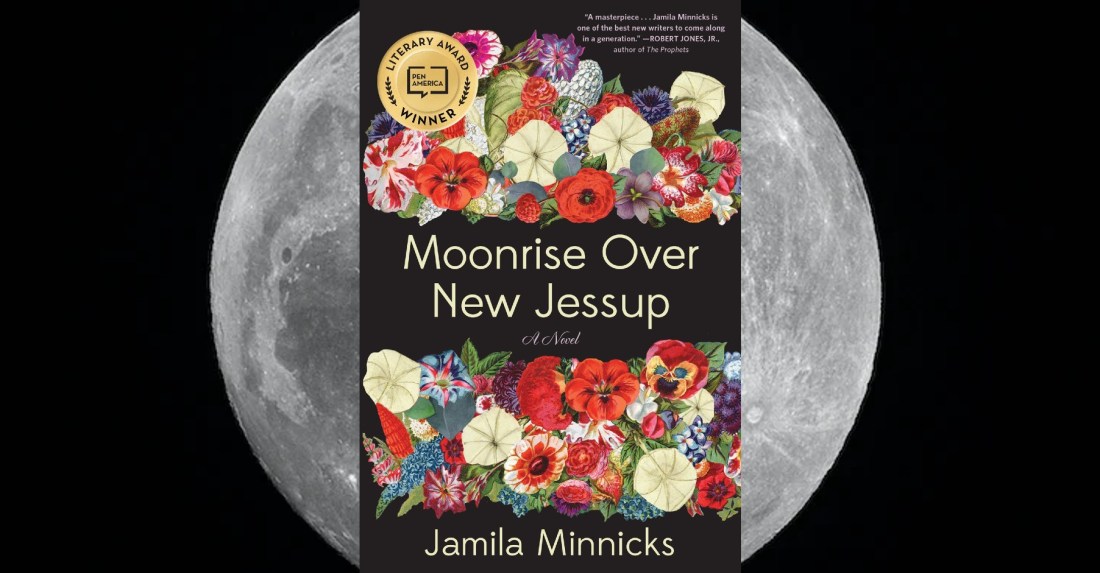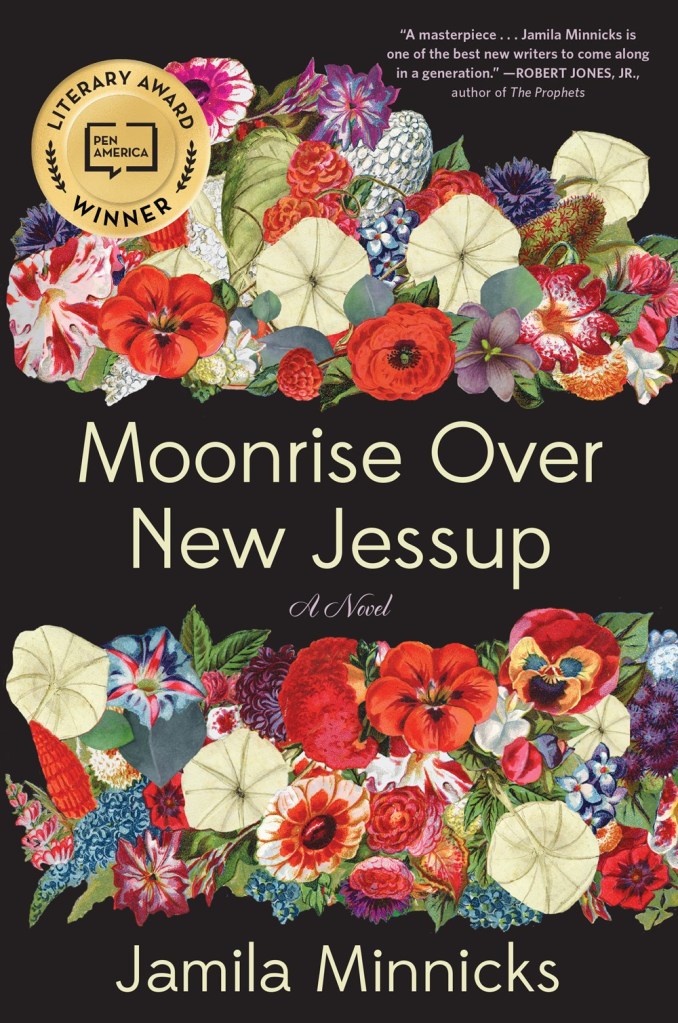The human desire for both security and self-determination often creates a dilemma. Taking risks inevitably means giving up what is familiar and safe, creating tension at the core of a story’s arc. Jamila Minnicks’s debut novel, Moonrise Over New Jessup, presents such a dilemma at an intimate personal level and a broader sociological context. Against the backdrop of a period of racial unrest in the late 1950s and early 1960s, the novel boldly questions the value of integration and acceptance if it means losing the comfort that separation has created.
Following the deaths of her parents, the departure of her older sister Rosie, and the threat of assault by a lecherous landlord, Alice Young flees her home and boards a bus bound for Birmingham, Alabama. She disembarks at the all-Black town of New Jessup, where the residents have rejected integration in favor of a separate existence, where Black businesses thrive and Black social life is vibrant. Taken in by Pastor and Mrs. Brown, Alice finds employment as a seamstress working for Ms. Vivian, a local dressmaker. She takes a second job in a diner that is the hub for the town’s local leaders. There, Alice meets Raymond Campbell, whose secret organizing activities with the local chapter of the National Negro Advancement Society (NNAS) challenge New Jessup’s comfortable status quo and threaten to make the town a target of its white neighbors. Alice strives to balance her love for Raymond and her desire to support him with her fear of losing the security she has found in her new community.
Ironically, Alice is struggling to integrate herself into this segregated society. While initially welcomed and supported as she starts to rebuild her life, Alice is still an outsider, eyed suspiciously by some of her in-laws and members of Raymond’s NNAS cohort. After marrying Raymond, she struggles to make the Campbell family’s fortress “her” home, berated by her brother-in-law Percy for wearing his deceased mother’s apron and taking over the kitchen at a holiday gathering.
Though she keeps Raymond’s activism a secret, Alice questions the goals of integration. “So you sit . . . up front with white folks on the bus,” she says to Percy. “You do that because you can? Or cause you want to? [W]hen I rode the bus in New Jessup . . . I sat where I wanted to.” She cherishes her new life in New Jessup because there are “no signs telling me my place because everyplace is my place.” Yet there are “signs” everywhere. New Jessup is not immune from the intrusion of racism in everyday life simply because of its separateness. The history books in the local school, sent from the white part of Jessup “across the woods,” are tarnished by racist epithets scribbled in the margins, whole sections torn from their tattered pages. The owners of white-owned Fitzhugh Auto call Raymond’s home at all hours of the night to “ask favors,” intimidating Raymond and his father, Pops, to take towing jobs they are unwilling to do. Lurking in the background is the “creeping blackdamp,” a “wondering” of what could go wrong, a constant “thinking about dying, scared to trust the air.” New Jessup’s white neighbors tolerate its peaceful independence so long as there are no signs of “agitating.”
The characters of Moonrise Over New Jessup are complex and compelling. Alice comes across as humble and easy-going, yet there is a hardened side to her; she is not afraid to speak her mind or handle a gun. In struggling to preserve a secure life while at the same time supporting Raymond in his activism, Alice damages herself in the process. “I’ve told half-truths and kept things to myself around here for years,” she tells Raymond. “So call me a liar all you want, I guess, but you’d better thank me while you calling me it.” Raymond is admirably devoted to his family and close circle of friends, yet at times appears to be played by his activist associates, drawing him into fighting for broader integration while he is focused on self-determination. Alice’s friend Patience, who writes “scribblings” advocating civil rights under a pseudonym, suffers from a “deliberate loneliness,” wanting “an ocean between herself and others, and sometimes, she meant to drown the very people she presumed to love.”
The novel is full of rich descriptive detail, portraying New Jessup as an elegant, cherished place. Even the characters’ speech seems overly formal and, at times, borders on grandiloquent, perhaps deliberately so, emphasizing the sophistication of the community. Alice describes her first impressions of the Campbell property, beautified by rows of flowers, trees, and vines, “exploding on the land until God ran out of color.” Ms. Vivian’s creation of Alice’s wedding dress is a meticulous matching of pearl buttons, “fingertip by tip,” reminding Alice of her mother and sister sorting field peas, the imagery celebrating complexity while paying quiet homage to rural life.
Moonrise Over New Jessup shows how a sense of security cannot be created simply by willing it to be, insulating oneself from the world. Instead, it is built on a set of compromises, a series of difficult choices. As Alice straddles the fence between her sense of personal well-being and her loyalty to her husband, she cannot ignore the contradiction it creates. Ultimately she must make peace with the inconsistency in her life. Similarly, as New Jessup struggles to preserve its independence, it cannot ignore the threat of the larger racist society that tolerates — even celebrates — its separateness, but seeks to define its terms. Moonrise Over New Jessup reminds us that history is not a monolith, but is experienced by individuals and communities in different ways, mirroring the conflict and contradictions of everyday life.
FICTION
Moonrise Over New Jessup
By Jamila Minnicks
Algonquin Books
Published January 10, 2023


